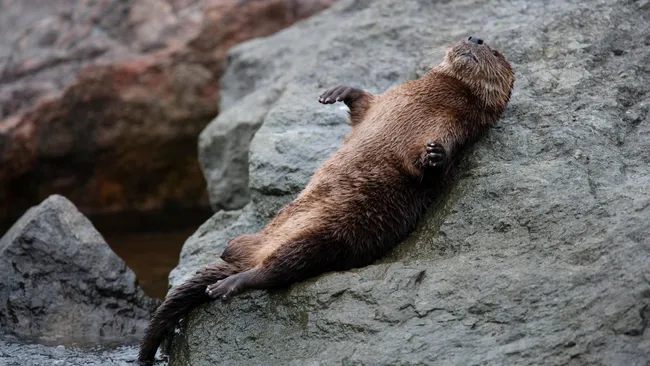Chungungo (Marine Otter): A Tiny Sea Cat of the Coast
The chungungo (Lontra felina), also known as the marine otter or sea cat, is the smallest species of otter and a unique inhabitant of the rugged, rocky marine coastlines of South America.
Where It Lives
Chungungos range from the northern coast of Peru to the southernmost regions of Chile, including Cape Horn and Isla de los Estados in Argentina. They thrive along rocky shores, where their dens are hidden in crevices and caves, offering shelter from extreme winds and powerful ocean swells.
Diet
Chungungos are voracious eaters, consuming crustaceans, mollusks, fish, and occasionally small birds or mammals. Their high metabolism drives them to eat up to a third of their body weight daily to maintain their body heat in cold waters.
Unique Adaptations
- Body Design: With an elongated body, small flattened head, and streamlined silhouette, the chungungo is perfectly adapted for aquatic life.
- Thermoregulation: Their vascularized feet help regulate temperature by spreading toes to cool down or closing them to retain warmth. Grooming their dense fur coat also preserves insulation.
- Swimming Style: Chungungos often swim on their backs, using tails and hind limbs for propulsion while manipulating prey with their rear limbs.
Behavior and Life Cycle
- Daily Routine: Chungungos spend only about 20% of their day in the water, using the rest to sunbathe and conserve heat on land.
- Breeding and Pups: Monogamous by nature, marine otters form lifelong pairs during the breeding season (December–January). Females give birth to one to three pups, which stay with their mothers for 8–12 months before becoming independent.
Why They’re Awesome
Standing at just 45 inches (114 cm) in length and weighing 6.6 to 11 pounds (3–5 kg), the chungungo is a marvel of small-scale adaptation to extreme environments. Their playful nature, resourcefulness, and resilience in a challenging habitat make them a standout species among otters.
However, their dense, soft fur once made them a target for the fur trade, leading to significant population declines. Today, conservation efforts are crucial to protecting this charming “sea cat” and the rugged ecosystems it calls home.
